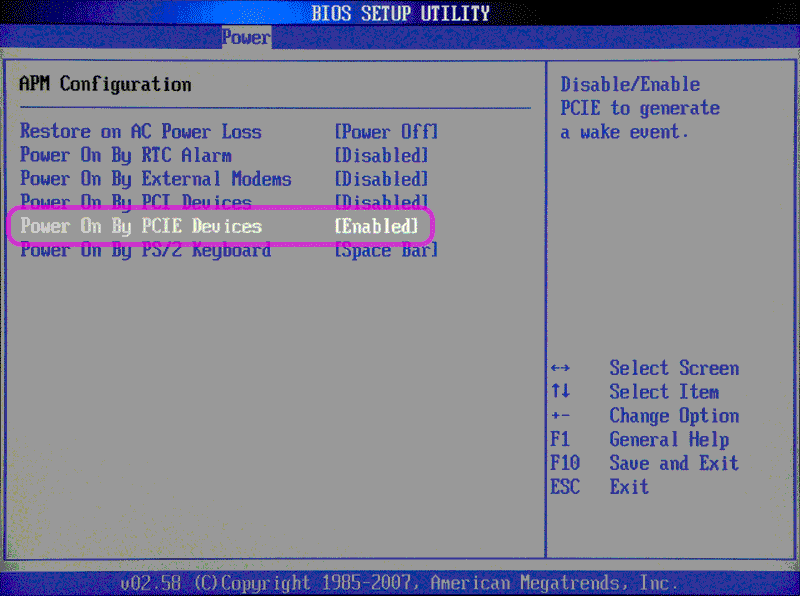

Please check applicable products at the bottom of this page. Information on this page is applicable for Legacy Server Products based on Intel® Intel® 5500/5520/3420 Chipsets. This time, I threw a Wake On LAN magic packet with an external command, but it seems that it can also be applied such as connecting after launching an AWS instance.Īnyway, systemd can do anything. I made a TCP proxy with systemd and showed that any external command can be executed before its connection. It's not unbearable, but I think it's too late, so there may be some improvements.
#Wol magic packet sender tcp windows#
I'm using Raspberry Pi 2 as a proxy, but there seems to be no performance problem (because I had enough CPU load and network bandwidth as far as I experimented).īy the way, in my environment, there is a time lag of about 30 seconds from connecting to the proxy to connecting to the sleeping Windows by remote desktop. When I actually used it, it was more practical than I expected.
#Wol magic packet sender tcp mac#
The IP address and MAC address are for example only, so change them as appropriate when using the above settings. Therefore, before connecting, I used ʻExecStartPre` to check if TCP connection was possible, and proxyed after it became possible to connect. Because there is a time lag between throwing the magic packet and the remote desktop server going into the listen state, you have to wait for a while before you can connect. However, simply proxying with netcat did not work as expected. One process will be started for each connection. The main process is proxying using netcat. Requires specifies the service that throws the magic packet created earlier. etc/systemd/system/ ĭescription = Server for RDP (Remote Desktop Protocol) Proxy : You can also use ListenDatagram = to listen on UDP. Also, if ʻAccept = yes`, you need to create a service template with the same name. $ sudo systemctl enable rdp-proxy.socketīy setting ListenStream =, it listens on TCP 3389 and passes it to the service. etc/systemd/system/rdp-proxy.socketĭescription = Socket for RDP (Remote Desktop Protocol) proxyĪfter installing the above file, enable automatic startup. Next, we will create a TCP proxy with systemd. Throw magic packets before connecting with TCP proxy This will send a magic packet to the MAC address 00: 00: 5e: 00: 53: 01. Here, the MAC address is specified as the instance string and used. etc/systemd/system/ ĭescription = Sending Wake on LAN packet (oneshot)Ī service template is a mechanism that converts a part of the service name (instance character string) into a variable character string and passes it to the service. This was written in the oneshot service template. Systemd is a high-performance service management program used in recent Linux.įirst, I will introduce the process of throwing a magic packet. Since there is no protocol-dependent part, it should be possible to use it other than remote desktop. This article will introduce the details of this mechanism. This eliminates the hassle of throwing magic packets on your Mac, and allows you to log on to Windows simply by selecting the connection destination from the GUI of the remote desktop. I have a Raspberry Pi that is always running in my house, so I decided to operate a TCP proxy here. So, I configured a TCP proxy with systemd and created a mechanism to automatically throw magic packets before connecting to the proxy.

Of course, the commands I used before are recorded in the history, so I can manage it, but in the first place, it seems to be troublesome to manually throw magic packets every time. However, it is not uncommon to forget the MAC address of a Windows machine or forget the command to throw a magic packet in the first place. : It's a remote desktop dedicated machine and it's out of reach because it's not normally used. This Windows machine is usually put to sleep, so if you want to use it, you must first throw a Wake On LAN magic packet to wake it up. I'm a Mac user, but sometimes I use my Windows machine at home via Remote Desktop. The topic of systemd, TCP proxies and Wake On LAN. I was late when I was having trouble debugging. This article is the 7th day article of KLab Engineer Advent Calendar 2019.


 0 kommentar(er)
0 kommentar(er)
